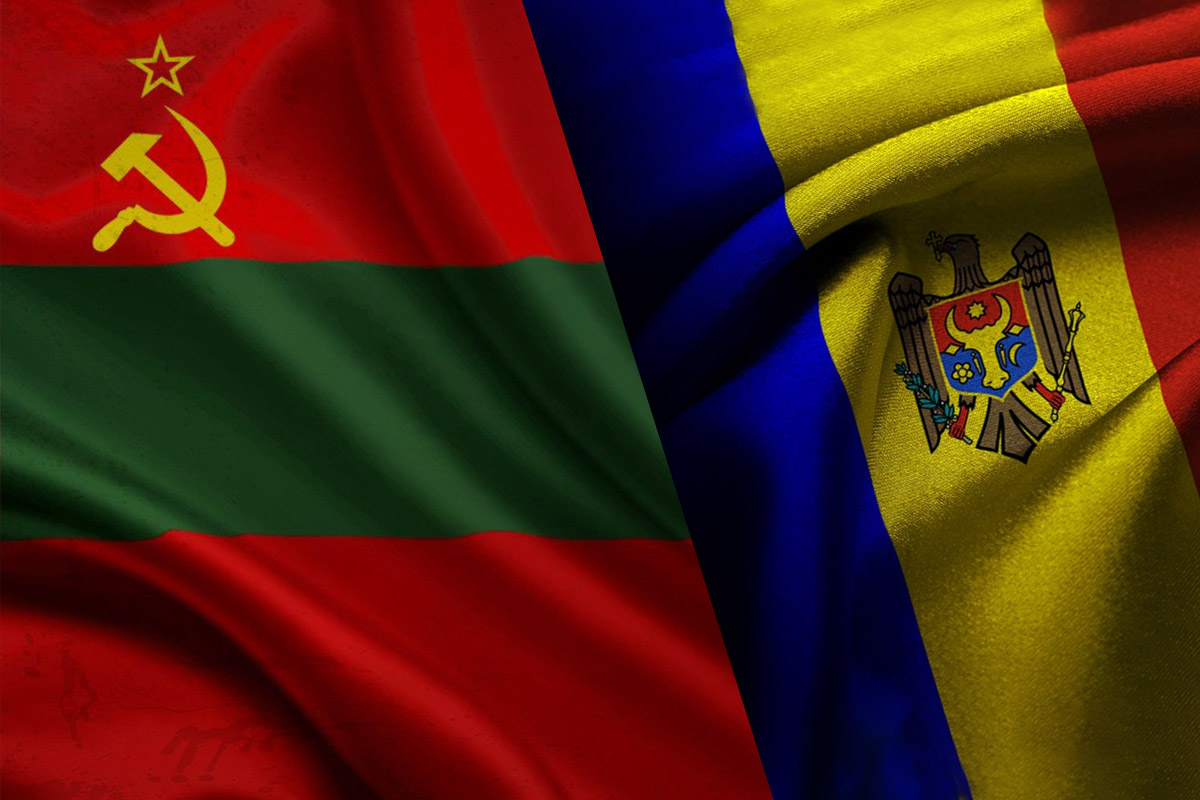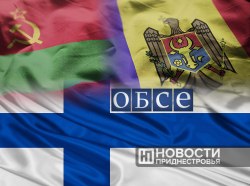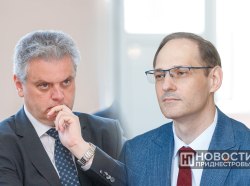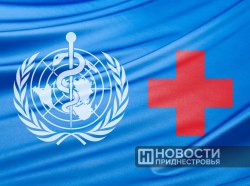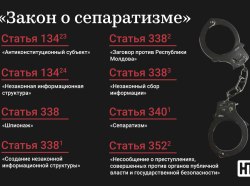On April 27, 1990, the second step was taken towards the destruction of the Moldavian SSR in Chisinau - on this day, the parliament of the union republic officially recognized the Romanian tricolor as their state flag. This caused discontent in Pridnestrovie, whose residents associated the Romanian tricolor with the occupation and ethnic cleansing of 1941-44. Chisinau's attempts to approve a new flag led to massive acts of disobedience: residents of cities and villages of Pridnestrovie refused to accept the Romanian tricolor and removed it from the flagpoles. The uncompromising position of the Moldovan nationalists further strengthened the divisions between the two banks of the Dniester.
The first step towards the collapse of the union republic was taken by the nationalists and the party elite that followed them back in 1989, by adopting discriminatory laws on the language, which put the non-Moldovan population of the MSSR in an unequal position in relation to the representatives of the titular nation. After a series of strikes, the Pridnestrovians put their hopes on the resolution of the conflict upon the allied leadership: Moscow recommended finding a compromise and preventing the collapse of the Moldavian SSR. Recall that this union republic was created by artificially combining two different historical and geographical regions. For 50 years, they coexisted within the framework of the Soviet Union, a country built on the principles of internationalism. But with the perestroika, there began to appear the contradictions between the regions that were not similar to each other.
In February-March 1990, elections to the Supreme Soviet were held in Moldova, as well as in other union republics. And although more than 80% of the elected deputies remained members of the Communist Party, the divisions of the republic's population over the national-linguistic issue significantly influenced the political structure of the parliament. The Supreme Soviet was immediately divided into several parliamentary factions. The faction Viaţa satului ("Country life"), which later became the majority, was made up of supporters of the Moldovan national-cultural identity, mostly collective farms chairmen. The factions of frontists (members of the Popular Front of Moldova) and democrats mainly consisted of representatives of the Moldovan creative intelligentsia, who, in the context of the ever-increasing crisis of the socio-economic system of the USSR, advocated the soonest unification of Moldova and Romania with the complete loss of their national identity by the Moldovans. The Soviet Moldavia faction includes representatives of national minorities: Russians, Ukrainians, Gagauz, Bulgarians, including deputies from Pridnestrovie. It was also joined by the deputies, members of the Unitate-Unity Intermovement.
The Communist Party of Moldova leadership agreed to collude with the national radicals and the Popular Front, which only had 25% of all mandates. As a result, the nationalists controlled the Presidium and all the permanent parliamentary commissions. With the majority, they used various ingenious tricks to put their destructive ideas into effect: thus, the chairman openly imposed his will on the rest of the deputies, documents were often adopted "by ear", the results of the electronic voting system were openly rigged, and the positions of the minority were defiantly ignored. One of the leaders of the PFM, Deputy Chairman of the Supreme Soviet of the MSSR Ion Hadirce said cynically about all this: “Through violence we have come to progress”.
The approval in April 1990 of the Romanian tricolor as the official flag immediately led to conflict with the city councils of Tiraspol, Bendery and Rybnitsa. They refused to recognize the new flag, adopted without discussion by parliament as the state one, and to raise it, especially since it too much reminded the Pridnestrovians of the allied Nazi Germany of Romania flag, which troops occupied Pridnestrovian land from 1941 to 1944 and committed a number of war crimes on it, including ethnic cleansing. Thus, tens of thousands of Jews from the regions closest to the city were shot in Dubossary.
In May 1990, protests against the tricolor were held in all Pridnestrovian settlements, while the new flag was removed from the flagpoles and replaced with the Soviet banner. “On behalf of my voters, I reject this flag [Romanian tricolor - ed. note] as a flag of violence!” the deputy of the City Council of Dubossary Gennady Kozlov said.
But instead of looking for a compromise, Chisinau demanded an ultimatum from Pridnestrovians to cancel decisions on refusing to recognize the new official flag by May 9 and began preparing a draft law on the observance of the constitution. The Ministry of Internal Affairs, the KGB and the Prosecutor's Office of the MSSR were instructed to ensure the use of the new symbols throughout the republic. The parliament openly called to raise the tricolor by force and to impose economic sanctions against the recalcitrant, while the deputy K. Oborok said blatantly: "We will jail all those who oppose the symbols of Moldova, there are enough prisons for everyone". The law enforcement bodies of Moldova tried to implement the Moldovan deputy`s words.
Thus, on May 17, 1990, the Literatura și arta newspaper published an announcement about the upcoming rally of the Popular Front near Bendery. One of the phrases of the announcement sounded like this: "We will demonstrate to everyone that Tighina was, is and remains Romanian city". Working collectives of Bendery enterprises, suspecting that the rally would become a provocation of radical nationalists, began to create self-defense units.
It should be noted that in its entire history, Bendery was not part of the Moldavian principality, which ceased to exist in the middle of the XIX century as a result of the creation of Romania. There is evidence that the first fortress was founded by the Italians-Genoese in the XIII-XIV centuries; then, since the XVI century this territory became part of the Turkish province, directly subordinate to Istanbul. And since the beginning of the XIX century Bendery are taken out to the citizenship of Russia, turning into a Russian city on the right bank of the Dniester. Therefore, the ideas of nationalists did not find support here, but, on the contrary, aroused the revulsion among the townspeople.
The rally, scheduled for May 20, according to the organizers' application, was to take place in the Varnitsa region. It was stated that the rally will be dedicated to the laws on languages, the transition to the Latin alphabet and the adoption of new state symbols. It was attended by about 3 thousand people brought by the Popular Front from Chisinau and rural areas of Moldova. Some protesters urged to immediately go to Bendery and hoist the tricolor over the city council.
As a result of the nationalists` rally, a resolution was adopted in which distrust was expressed to the deputies of the MSSR, who represented Bendery, and it was required to place a tricolor flag over the Bendery City Council. After that, most of the protesters dispersed, but a small convoy still tried to break through to Bendery. Anticipating such an attempt, the city authorities had previously identified a train that blocked the way for the convoy. Members of the Popular Front managed to unhook the carriages and moved on, however, faced with one of the Bendery self-defense workers, they abandoned further attempts to penetrate the city. On the very next day, after the incident, the law enforcement agencies of Moldova opened a criminal case against the Bendery workers.
Thus, the adoption of the Romanian tricolor as the state flag of the Moldavian SSR intensified the collapse of the union republic at that time. In the future, the gap between Pridnestrovie and Moldova will only grow. In May 1990, deputies of the Supreme Soviet of the MSSR from Pridnestrovie were beaten in Chisinau. In June, the parliament will rename the union republic SSR Moldova and recognize the formation of the Moldavian SSR in 1940 as illegal, thereby renouncing the common state with Pridnestrovie. In response, the Pridnestrovian deputies of all levels will recreate the republic that existed in 1924–40, proclaiming the Pridnestrovian Moldavian SSR. The state flag will be the red-green banner of the Moldavian SSR, which successor is the PMR. But even then, Tiraspol will propose to restore the common state, albeit on a federal basis. However, Chisinau will again intensify confrontation, cross the red line and begin bloodshed.
Dmitry Kuzmin

